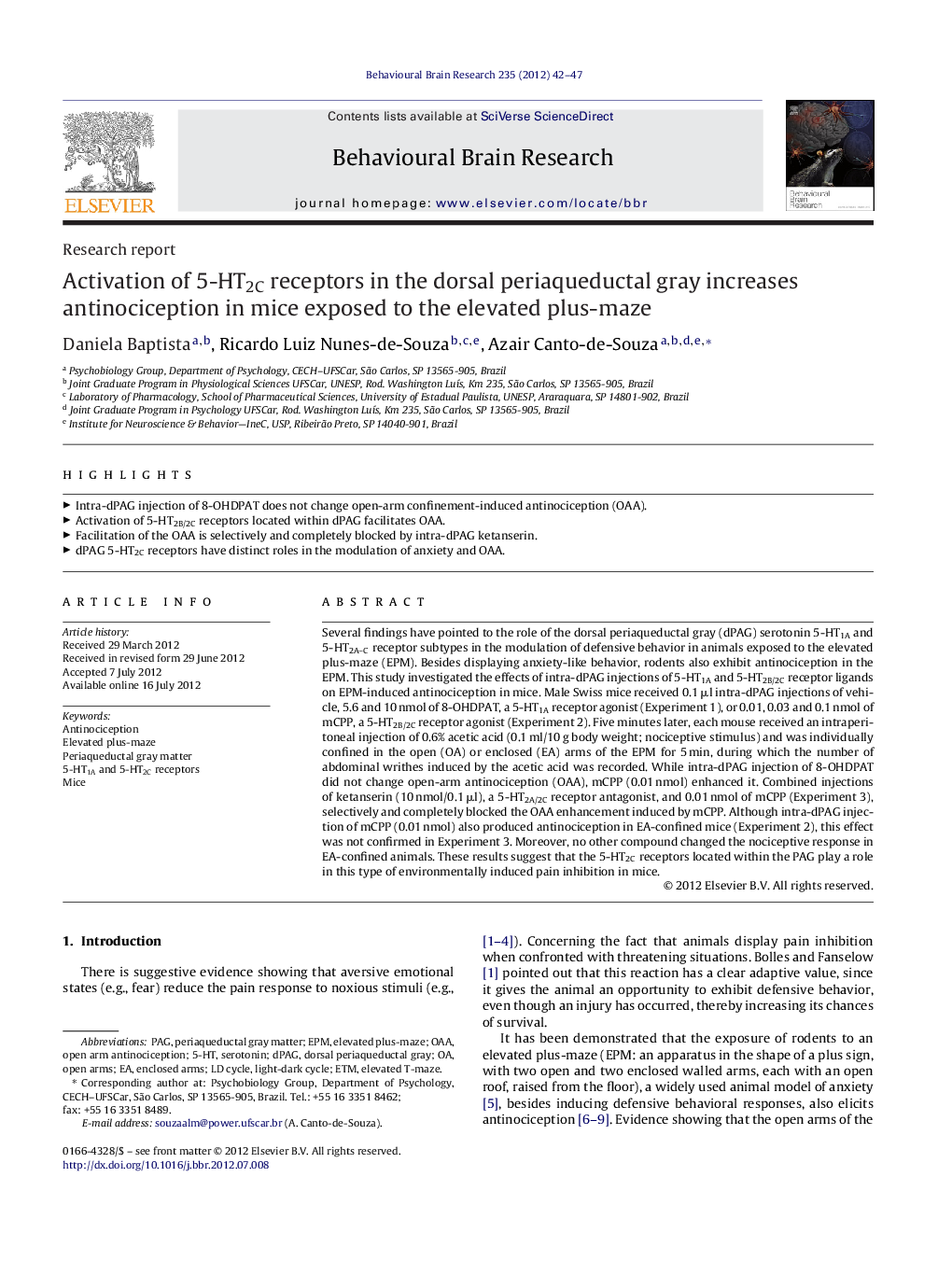| کد مقاله | کد نشریه | سال انتشار | مقاله انگلیسی | نسخه تمام متن |
|---|---|---|---|---|
| 4313049 | 1289982 | 2012 | 6 صفحه PDF | دانلود رایگان |

Several findings have pointed to the role of the dorsal periaqueductal gray (dPAG) serotonin 5-HT1A and 5-HT2A–C receptor subtypes in the modulation of defensive behavior in animals exposed to the elevated plus-maze (EPM). Besides displaying anxiety-like behavior, rodents also exhibit antinociception in the EPM. This study investigated the effects of intra-dPAG injections of 5-HT1A and 5-HT2B/2C receptor ligands on EPM-induced antinociception in mice. Male Swiss mice received 0.1 μl intra-dPAG injections of vehicle, 5.6 and 10 nmol of 8-OHDPAT, a 5-HT1A receptor agonist (Experiment 1), or 0.01, 0.03 and 0.1 nmol of mCPP, a 5-HT2B/2C receptor agonist (Experiment 2). Five minutes later, each mouse received an intraperitoneal injection of 0.6% acetic acid (0.1 ml/10 g body weight; nociceptive stimulus) and was individually confined in the open (OA) or enclosed (EA) arms of the EPM for 5 min, during which the number of abdominal writhes induced by the acetic acid was recorded. While intra-dPAG injection of 8-OHDPAT did not change open-arm antinociception (OAA), mCPP (0.01 nmol) enhanced it. Combined injections of ketanserin (10 nmol/0.1 μl), a 5-HT2A/2C receptor antagonist, and 0.01 nmol of mCPP (Experiment 3), selectively and completely blocked the OAA enhancement induced by mCPP. Although intra-dPAG injection of mCPP (0.01 nmol) also produced antinociception in EA-confined mice (Experiment 2), this effect was not confirmed in Experiment 3. Moreover, no other compound changed the nociceptive response in EA-confined animals. These results suggest that the 5-HT2C receptors located within the PAG play a role in this type of environmentally induced pain inhibition in mice.
► Intra-dPAG injection of 8-OHDPAT does not change open-arm confinement-induced antinociception (OAA).
► Activation of 5-HT2B/2C receptors located within dPAG facilitates OAA.
► Facilitation of the OAA is selectively and completely blocked by intra-dPAG ketanserin.
► dPAG 5-HT2C receptors have distinct roles in the modulation of anxiety and OAA.
Journal: Behavioural Brain Research - Volume 235, Issue 1, 1 November 2012, Pages 42–47